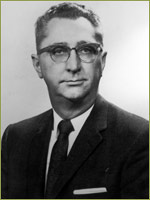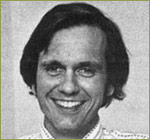Special Topics
THE DEVELOPMENT OF THE UCSF MEDICAL CENTER
by Nancy Rockafellar
Prelude: Unrealized Plans for a University Teaching Hospital
Although the first University of California Hospital did not appear until the 1906 earthquake and fire brought urgent hospital needs to the city, plans for a university hospital for the Medical Department had been taking place since the turn of the century. In 1902 University President Benjamin Ide Wheeler appealed to the Regents and the California public for support to build a dedicated teaching hospital for the medical school to create a reservoir of free hospital beds for the city, and “to provide for the education of those to whom the health of the community must in future years be entrusted.” In an effort to create a significant endowment for construction and maintenance of such an institution, a medical faculty committee hired architect Bernard Maybeck to design an elaborate hospital to be built on the pavilion style. Depending on the funding they could raise for the purpose, the committee estimated the cost at from $400,000 to five million in 1900 dollars, an amount that would allow UC to duplicate the hospital that Harvard University had projected.
Practical Origins of the UC Medical Center, April 1907
The first UC teaching hospital on the Parnassus campus was founded in the wake of the 1906 earthquake and fire. The basic science departments were moved to Berkeley, and the vacated space in the Medical School building was converted into a teaching hospital. Throughout the first half of the twentieth century, a disparate group of affiliated colleges and a training school for nurses united geographically at Parnassus, and became mutually involved in delivery of patient care to the San Francisco and California public.Hospital Directors and Superintendents of the UC Hospital and Medical Center
1907–1921 “Superintendent of the University Hospital”In the wake of the SF earthquake and fire, Dean Arnold D’Ancona, M.D. took over the direction of the first UC Hospital in spring of 1906, assuming the difficult task of managing the transfer of the basic sciences to the Berkeley campus as well as creating a functioning hospital out of a building originally designed for teaching. In so doing, he acted as liaison with the UC President and the Board of Regents and served as educational director, supply purchaser, construction supervisor, accountant, budget manager, and co-creator of the training school for nurses. In the space of a few months, he succeeded in engaging Regental support for the creation of a hospital, training school for nurses, a dental infirmary, a pharmacy dispensary and outpatient services at Parnassus. After several delays, doors opened for patients in April of 1907.
In 1913, when he became dean of the College of Medicine, Herbert Moffitt refused the task of hospital management, preferring to use his influence to lobby the Regents for reconsolidation of the Medical School’s in San Francisco. He busied himself planning a new configuration for the Parnassus campus and raising funds for a new UC Hospital, to be built expressly for the purpose of patient care and teaching. By this time, the Regents were convinced of the need for a professional hospital administrator and allocated a fulltime salary of $3,000 for this position. In 1915 H. T. Summersgill arrived to take on supervision of the hospital and training school. He came to California with impressive national credentials—he had been the administrator of Yale’s New Haven Hospital, and had subsequently supervised a large building program at Cincinnati General. During his four years of service at UC, he became intimately involved in governance of the training school for nurses as well as the hospital. In August of 1917, he presided over the opening of the grand new 225-bed UC Hospital, which had been erected by private donations from Dr. Moffitt’s successful fund drive.
In summer of 1918, Summersgill left to pursue war work, and Dr. William E. Musgrave was recruited to the position of hospital director. Dr. Musgrave was a local figure that had long experience with hospital administration and he continued to manage the Childrens’ Hospital and Nurses’ Training School along with the hospital at Parnassus. When Musgrave became superintendent, Dr. Louise Morrow, the director of the social service department of the Medical School, was named director of nursing for both the training school and hospital. During this time, the long-awaited seven-story Nurses Dormitory opened and the UC Training School settled into a stable and productive period, characterized by increasing student autonomy and self-government.
For a brief time after the First World War, a young Harvard resident named Willard Rappleye came to San Francisco from Massachusetts General, recruited to act as combined administrator and biochemist. He hoped to balance research and administrative duties, but was unable to carry such a heavy load. He resigned, sometime in 1921, citing difficulties with coordinating the university teaching and hospital work. Rappleye went on to Yale and Harvard, was dean of Columbia University college of Physicians and Surgeons from 1930–1958, and eventually served as President of the Josiah Macy Jr. Foundation.
1922–1932: “Director of the University Hospital”Willard Rappleye’s abrupt departure marked the beginning of a long period of uncertainty for the Medical School, as high-level negotiations continued with the General Education Board over the proper geographical location of the basic sciences. UC President Barrows served ex-officio as President of the medical school faculty from 1921–1923, and Dr. Lionel Schmitt, a medical faculty member with an interest in hospital service, took office as “acting” dean from 1923 to 1927. Dr. Schmitt also served as Director of the University Hospital for the following decade. During this time, the promise of Rockefeller funding delayed the reconsolidation of the medical school and UC Presidents Barrow and Campbell worked unsuccessfully to secure endowment. Schmitt’s tenure as dean and hospital director were unremarkable, since, according to his successor, as acting dean, Schmitt’s “position...failed to carry the authority and prestige for the sweeping changes that the Regents had in mind.” In 1929, however, Schmitt did recruit Dr. W. E. Carter as director of the outpatient department and Carter developed a random teaching service into a true statewide referral center.
1933–1947 “Superintendent of the University Hospital”
In 1933 F. Stanley Durie became the superintendent of the University Hospital, UC’s first long-term professionally trained hospital administrator. He led the hospital and outpatient department through the difficult days of the Great Depression and the Second World War. In 1933 the Clinics Building was constructed at “minimal expenditure”, while giving employment to needy workmen. This new facility marked a bright spot in the 1930s and united the patient care activities of the affiliated colleges geographically in one facility. During Durie’s administration, planning and lobbying for extensive new medical facilities at Parnassus began. Already by spring of 1941, plans for Moffitt Hospital were drawn up and Supt. Durie anticipated groundbreaking within weeks. War intervened, however, and the process of planning Moffitt Hospital and medical sciences buildings was put on hold, to be revisited after the war emergency.
1947–1956 “Administrator of the University of California Hospital, San Francisco”
In 1947, William B. Hall succeeded F. Stanley Durie as hospital administrator, drawing upon his long career at UC Hospital. The postwar period brought changes in American medicine and a new emphasis on research redirected the original plans for the Parnassus Campus. In 1949, the UC Hospital was officially renamed “University of California Medical Center.” Plans were revised to include placement of research facilities in close connection with patient bedsides to facilitate clinical research. William Hall supervised the occupation of Moffitt Hospital, but died suddenly, in 1956, in the midst of campus transformation.
1956–1969 “Administrator of the University of California Hospitals, San Francisco”
In 1956 William Hall’s assistant Harold Hixson took over, presiding over enormous changes in hospital administration, including the coming of Medicare in 1966. His experience under William Hall brought continuity to the top position, and he managed to maintain a calm, conservative persona through the social turmoil of the late 1960s.
1970–1999 “Administrator of the UCSF Medical Center”
In 1970, UCSF once again turned to outside candidates to recruit for the ever more challenging position of hospital administrator. In 1970 Robert “Bob” Derzon arrived to direct the medical center. He had formal graduate training in Business Administration and Hospital Administration, and had gained valuable experience working in the Municipal Hospital System in New York City under Mayor John Lindsey.
When he arrived at San Francisco he recalls finding a strong nursing operation, a unique clinical pharmacy program run by the School of Pharmacy, and pockets of strength, including neonatal intensive care and the kidney transplant program. He was determined to ensure that patient care flourished as well as research, and he felt strongly that a teaching hospital’s fortunes were closely tied to the distinction of its medical school, especially with respect to house staff and the quality of patient care.
In 1977, when Bob Derzon was called by the Carter administration to become the first administrator of the Health Care Financing Administration (HCFA), William “Bill” Kerr became director of the UCSF Medical Center. Bill Kerr had a background in social work dealing with Chicago street gangs, and had trained in hospital administration at the University of Minnesota. He also completed a challenging residency with Bob Derzon in New York City. He came to California in 1970 to serve as assistant director under Derzon, and became associate director in 1974. With seven years’ experience as Derzon’s associate, Bill Kerr brought his dynamic energy and leadership to the Medical Center for the next twenty-two years. Like his predecessor, he believed that UCSF was a well-run academic medical center, with a minimum of hierarchy and no real culture of conflict, and he maintained characteristic optimism, even though each decade brought another unique cost crisis. When UCSF-Stanford merger occurred in 1997, he became COO of the four merged hospitals, known as UCSF Stanford Health Care. Ultimately, financial losses and a culture clash between a public and a private university caused insurmountable problems for the merger however, and Kerr resigned in the wake of its dissolution.
Mark R. Laret currently services as Chief Executive Officer of the UCSF Medical Center.
References:
Benjamin Ide Wheeler, Chairman, “ The Need of a University Hospital,” in The University Chronicle: An Official Record .Vol. v. No.3 (Berkeley: University of California Publications, October 1902).
Langley Porter, “University of California School of Medicine, 1925–1941”, typescript.
Oral History Interview with Robert “Bob” Derzon and William “Bill” Kerr, Interviewed by Nancy Rockafellar, September 2007, Mill Valley, CA.
Notes contributed by Marilyn Flood, author of Promise on Parnassus: The First Century of the UCSF School of Nursing. San Francisco: UCSF Nursing Press, 2007.
AR 24 School of Medicine Dean’s Correspondence
AR 24.1 School of Medicine, Dean. Committee Reports, 1917-57
AR 24.2 School of Medicine, Dean. Faculty Minutes, 1864–1958
AR 87-46 Campus History Materials, Dept. of History of Health Sciences







